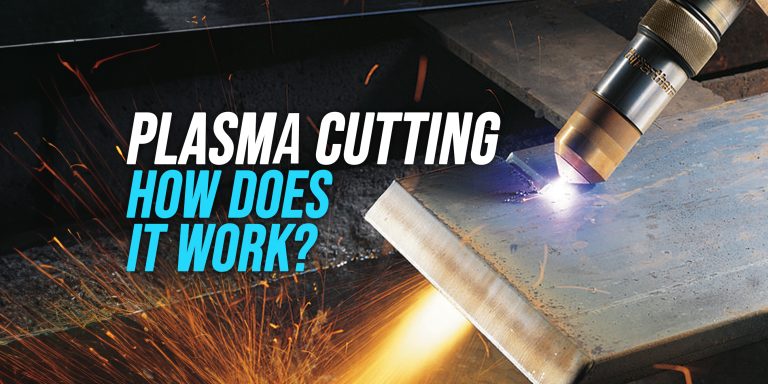Do Plasma Cutters Use a Lot of Electricity?

Plasma cutters are important tools for cutting metal, and many people wonder if they use a lot of electricity.
The answer depends on a few things, like the size of the cutter, how thick the material is, and how fast it cuts.
Usually, smaller plasma cutters used at home don’t use as much electricity as you might think, which can save you money. But the bigger ones used in industries for heavy work will use more electricity.
As a rough guide..
- Small, portable cutters: These might run on a standard 15-amp household circuit (1800 watts) at lower amperage settings, but even they can trip breakers if you push them too hard.
- Larger, industrial cutters: These beasts easily demand dedicated 20-amp or even 50-amp circuits (4800 watts and 12000 watts respectively) to handle their hefty appetite for power.
It’s important to know how much electricity your plasma cutter will use, so you can work efficiently and keep your costs down.
This article will help you understand how much electricity plasma cutters really use.”
The Basics of Plasma Cutting
Before we delve into the specifics of electricity consumption, it’s essential to grasp the fundamental principles of plasma cutting.
This knowledge will provide a solid foundation for understanding how and why plasma cutters utilize electricity.
At its core, plasma cutting is a process that involves creating a superheated, electrically conductive gas known as plasma. This plasma, when directed at a workpiece, rapidly melts and blows away the material, resulting in precise and clean cuts. Here’s a brief overview of the key principles:
- Plasma Formation:
- Plasma is formed when an electrical arc is created between the electrode inside the torch and the workpiece. This arc ionizes the gas passing through the torch, transforming it into plasma.
- The plasma reaches temperatures that can rival the surface of the sun, making it an incredibly effective cutting tool.
- Cutting Torch:
- The cutting torch is the heart of a plasma cutter. It contains the electrode and a nozzle through which the plasma stream is directed onto the workpiece.
- The nozzle plays a crucial role in maintaining the shape and stability of the plasma arc.
- Gas Supply:
- Plasma cutting requires a supply of gas, typically compressed air, nitrogen, or a mixture of gases, to create and maintain the plasma.
- The choice of gas depends on the material being cut and the desired cut quality.
- Power Source:
- The power source, which is an integral part of the plasma cutter, provides the electrical energy needed to sustain the plasma arc.
- It controls parameters such as amperage, voltage, and duty cycle, all of which affect electricity consumption.
Power Consumption of Plasma Cutters
Now that we have a grasp of the fundamental principles of plasma cutting, let’s dive into the specifics of how electricity consumption in plasma cutting is influenced by various factors.
Understanding these factors will help you make informed decisions when working with plasma cutters.
Amperage Settings:
- Amperage refers to the amount of electrical current flowing through the plasma cutter during operation. It plays a significant role in determining the electricity consumption. Higher amperage settings result in a more powerful and hotter plasma arc, which can cut through thicker materials but also consumes more electricity. Lower amperage settings are more energy-efficient but may have limitations when cutting thicker materials.
Imagine you’re cutting a sheet of 1/8-inch mild steel. If you set the plasma cutter to 20 amps, it will make precise cuts while using less electricity compared to running it at 60 amps, which would be necessary for cutting 1/2-inch steel.
Duty Cycle:
- The duty cycle of a plasma cutter refers to the percentage of time it can operate at a specific amperage setting within a given time frame, usually 10 minutes. For example, a plasma cutter with a 50% duty cycle at 40 amps means it can run for 5 minutes at 40 amps before needing a 5-minute cooling-off period. Operating beyond the specified duty cycle can lead to overheating and increased electricity consumption.
If you’re planning continuous cutting for extended periods, choosing a plasma cutter with a higher duty cycle at your required amperage setting is crucial.
This will ensure efficient and uninterrupted operation.
Material Thickness:
- The thickness of the material you’re cutting has a direct impact on electricity consumption. Thicker materials require more energy to melt and remove. Plasma cutters are designed to handle a range of material thicknesses, and choosing the right cutter for your specific applications can help optimize electricity usage.
Let’s say you’re working with stainless steel, and your project involves cutting sections that vary in thickness from 1/16 inch to 1/4 inch.
Using a lower amperage setting for the thinner sections can save electricity, while adjusting it appropriately for the thicker parts ensures efficient cutting.
Comparing Plasma Cutters to Other Cutting Methods
To gain a comprehensive understanding of how plasma cutters utilize electricity, it’s essential to compare them to alternative cutting methods such as oxy-fuel cutting and laser cutting.
Each method has its own electricity consumption profile and efficiency considerations.
Plasma Cutting vs. Oxy-Fuel Cutting:
- Plasma cutting is often more energy-efficient than oxy-fuel cutting. While both methods use electricity to power the equipment, oxy-fuel cutting also relies on a separate fuel source (typically acetylene or propane).Oxy-fuel cutting consumes electricity mainly for preheating and maintaining the torch, whereas the primary energy source is the fuel.Plasma cutting, with its high-temperature plasma arc, can cut through a wider range of materials and thicknesses with less preheating, reducing overall electricity consumption.
Advantages of Plasma Cutting:
- Greater energy efficiency when cutting thin materials.Faster setup and operation, as no extensive preheating is required.Clean and precise cuts with minimal heat-affected zones.
Disadvantages of Oxy-Fuel Cutting:
- Higher electricity consumption for preheating and maintaining the torch.
- Limited to ferrous metals due to the reliance on oxygen for the cutting process.
- Slower cutting speeds compared to plasma cutting.
Plasma Cutting vs. Laser Cutting:
- Laser cutting is known for its precision and speed, but it also has distinct electricity consumption characteristics.Laser cutting uses electricity to power the laser source, which generates a high-intensity beam for cutting. The power requirements vary depending on the laser type and material being cut.While laser cutting is incredibly efficient for thin materials, it may consume more electricity than plasma cutting for thicker materials.
Advantages of Plasma Cutting:
- More energy-efficient for cutting thicker materials and metals.Versatility in handling a broader range of material types.Lower initial equipment cost compared to high-powered lasers.
Disadvantages of Laser Cutting:
- Higher electricity consumption, especially for high-powered lasers.
- Initial setup and maintenance costs can be significant.
- Limited to specific material types and thicknesses.
Tips for Efficient Electricity Use
Now that we’ve explored the factors influencing electricity consumption in plasma cutting, let’s focus on practical tips for beginners to minimize electricity usage while operating a plasma cutter.
These tips not only contribute to energy efficiency but also offer cost-saving advantages for your welding projects.
Choosing the Right Amperage:
- Selecting the appropriate amperage setting for your cutting task is crucial for optimizing electricity use.
- Use the lowest amperage setting that effectively cuts your material. Avoid running the cutter at higher amperages than necessary.
- Benefits: Lower amperage settings consume less electricity, reduce heat generation, and extend consumable life. This translates to cost savings on both electricity and replacement parts.
Proper Maintenance of the Cutter:
- Regular maintenance is key to ensuring your plasma cutter operates at its peak efficiency.
- Keep the torch and nozzle clean from spatter and debris, as buildup can disrupt the plasma arc and increase power consumption.
- Check and replace consumable parts like electrodes and nozzles as needed to maintain cutting performance.
- Benefits: A well-maintained cutter requires less electricity to achieve the same cutting results, reducing operating costs and downtime.
Optimizing Cutting Speed:
- Adjust the cutting speed to match the material thickness and amperage setting.
- Cutting too slowly or too quickly can lead to increased electricity consumption and reduced cut quality.
- Experiment and find the optimal cutting speed for different materials to achieve clean and efficient cuts.
- Benefits: Properly optimized cutting speed minimizes energy waste and enhances the overall efficiency of the plasma cutting process.
A Few Common Concerns
There are several common concerns and misconceptions related to electricity usage with plasma cutters.
| Concern | Answer |
|---|---|
| “Plasma cutters always consume a lot of electricity.” | Plasma cutters’ electricity consumption varies depending on factors like amperage settings, duty cycle, and material thickness. With proper optimization, they can be energy-efficient for a wide range of cutting tasks. |
| “Higher amperage settings are always better.” | Higher amperage settings provide more cutting power, but they also consume more electricity. Choose the right amperage for the task at hand to balance power and efficiency. |
| “Running a plasma cutter at its maximum duty cycle is safe.” | Operating a plasma cutter beyond its specified duty cycle can lead to overheating and increased electricity usage. It’s essential to follow the manufacturer’s guidelines for duty cycle to ensure safe and efficient operation. |
| “Plasma cutters are less efficient than laser cutters.” | Plasma cutters can be highly efficient for certain applications, especially when cutting thicker materials. While laser cutters offer precision, the choice between the two depends on factors like material type, thickness, and budget. |
| “Regular maintenance doesn’t affect electricity consumption.” | Proper maintenance, such as cleaning the torch and replacing consumable parts, significantly impacts electricity consumption. A well-maintained cutter operates more efficiently and consumes less power. |
Conclusion
So, do plasma cutters use a lot of electricity? It really does depend on how you use it!
With knowledge and careful consideration of the factors discussed in this article, you can use plasma cutters efficiently and effectively without excessive electricity consumption.
In conclusion, we encourage you to make informed decisions and be mindful of electricity usage when using plasma cutters in welding.
By applying the insights and tips shared here, you’ll not only achieve cleaner and more precise cuts but also save on energy costs, contributing to both your craft and your bottom line.
Frequently Asked Questions
Can I use a plasma cutter for all types of metals?
While plasma cutters are versatile, the choice of metal matters. They work exceptionally well with conductive materials like steel, aluminum, and copper. However, non-conductive materials, such as wood or plastic, are not suitable for plasma cutting.
Do higher-end plasma cutters consume less electricity than budget models?
Not necessarily. The electricity consumption of a plasma cutter depends more on factors like amperage settings, duty cycle, and material thickness than the price of the machine. Some budget models can be energy-efficient if used correctly.
Is there a way to measure the exact electricity consumption of my plasma cutter?
Yes, you can measure the electricity consumption of your plasma cutter using a power meter or energy monitor. These devices can provide real-time data on power usage, helping you track and optimize electricity consumption for your specific cutting tasks.






